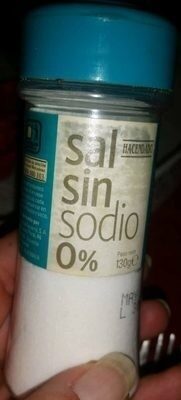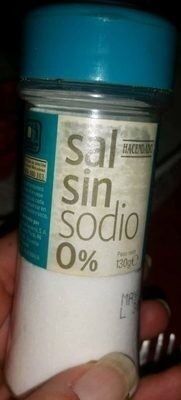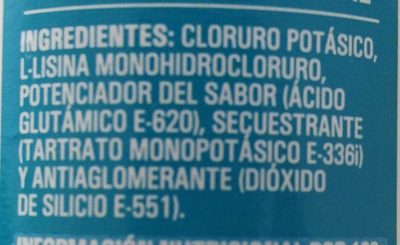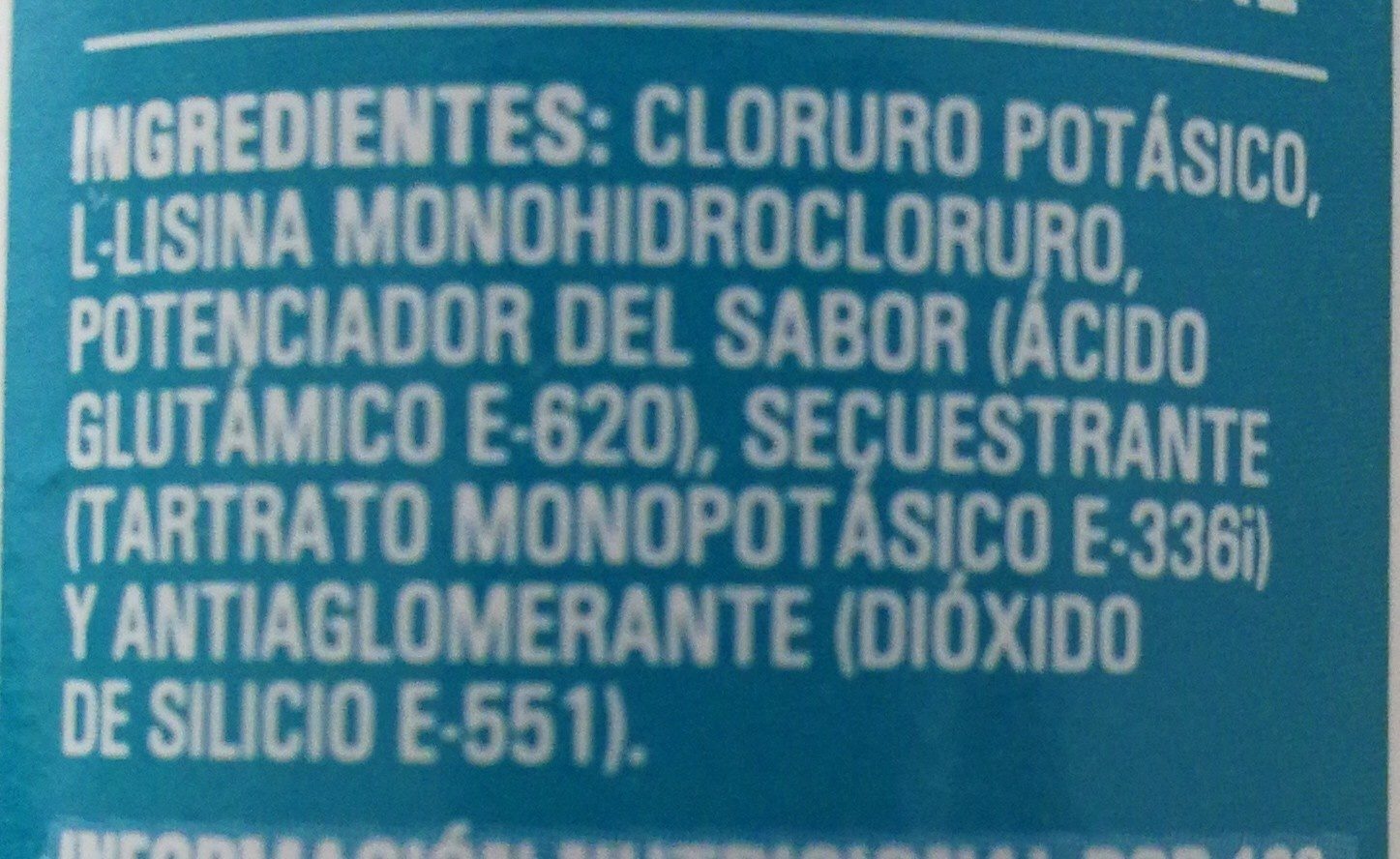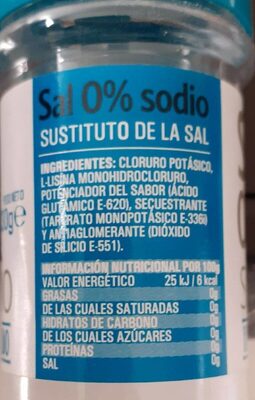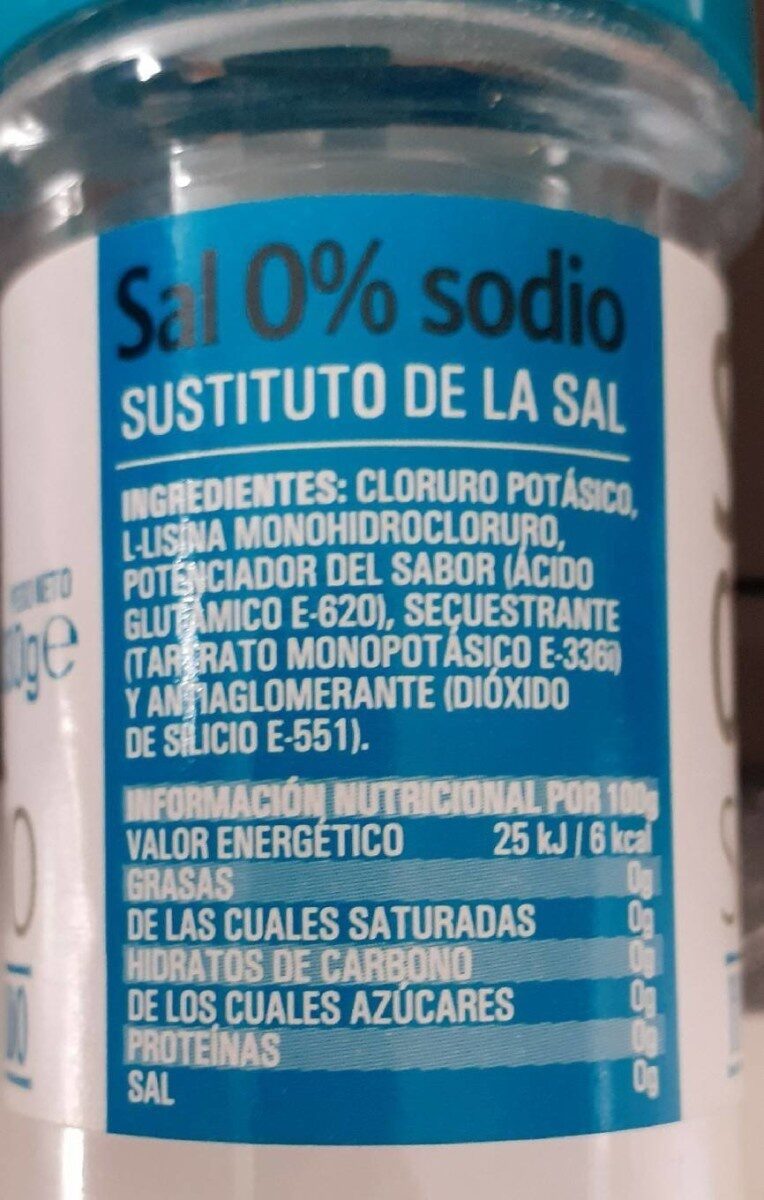Sal 0% sin sodio - Hacendado - 130 g
This product page is not complete. You can help to complete it by editing it and adding more data from the photos we have, or by taking more photos using the app for Android or iPhone/iPad. Thank you!
×
Barcode: 8480000197108 (EAN / EAN-13)
Quantity: 130 g
Packaging: Plastic
Brands: Hacendado
Categories: Condiments, Salts, Table salts, Groceries
Manufacturing or processing places: Alicante, España
Traceability code: 26.02994/A
Countries where sold: Spain
Matching with your preferences
Environment
Carbon footprint
Packaging
Transportation
Report a problem
Data sources
Product added on by openfoodfacts-contributors
Last edit of product page on by roboto-app.
Product page also edited by acuario, alexrios, keragui, kiliweb, packbot, tacite-mass-editor, teolemon, yuka.B5pEA4KFJPIcFsKO0rod3GGkS_e4KNUJCWAkow, yuka.CbFcJtqGOOsCH8vzybkUgTrqC9njPPxJE0Uhog, yuka.D-seIPKtGO9wMcXV96IR5R_qMvvNE6RQB2Ayog, yuka.DaJvZ_OXMZwCPcLiyaUt1iLlBbb5JaN6MXgdoQ, yuka.E-oTB-G1AfQFB8iO09MMjAWhDrzwA_JJFSUfoQ, yuka.FapnFeLbMPwlPvrX99Ie7TmJSvnSG_1CEy9Wow, yuka.HYpNGPe6Bp0gOvb29okQ8QSCGOHKWftEQHVdow, yuka.HahTN_TUMPR9LsTs1KA2_SO5Gcv9OOEJR3VSog, yuka.JJtDZP7TJpYmGPGI9aYJ5DekN8TwBflJQ0YRog, yuka.K-tFbfKAM_Z-HsTi0Nwm-WDkT8q9CdRcASZWog, yuka.KqBkBtGnR8p5FfTN14I95WKpSszrLdBwFScQog, yuka.L7wbPdiAHf4dG8rXgLkdwgCFM7f6AuBzJlEOoQ, yuka.MKBkZYCNMM0ZAsHZ64Eq4RiqD9nqPeRhJFI3og, yuka.P4wTPIKxFN4PNfD3iYRt8QCVDLvgLtZyPHo8og, yuka.Uko0OElLWTUrK0kweXNKbjVFdkVwWUp0MWFlclFIcXBPdlk4SVE9PQ, yuka.WXEwYlRhODVsUFFsdmNJaitVTFBvdkJ2OTdPVFUyYVlCdVpBSUE9PQ, yuka.XJJnFvmrLZE6QPbu9tIM3GOEL_fyGfxIGVBQog, yuka.sY2b0xO6T85zoF3NwEKvlhcbSuXen2jfbzDjnFG1-umOcoXyUfx52JqmM6s, yuka.sY2b0xO6T85zoF3NwEKvlnZpC8f4vgLIGBz5tHWU-YeyE7ryeMwo_rLbLKg.
